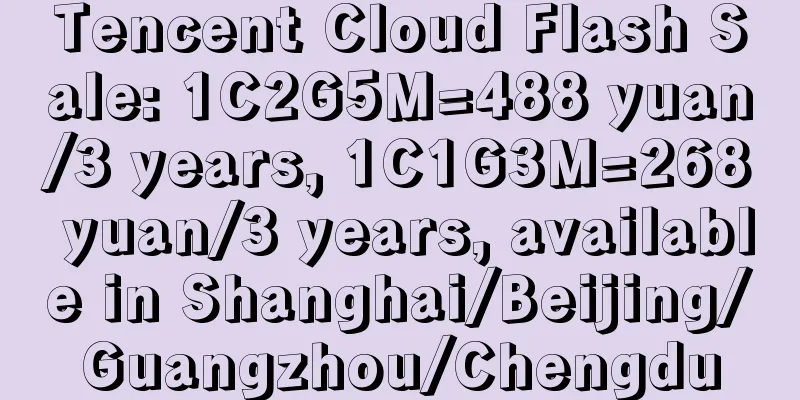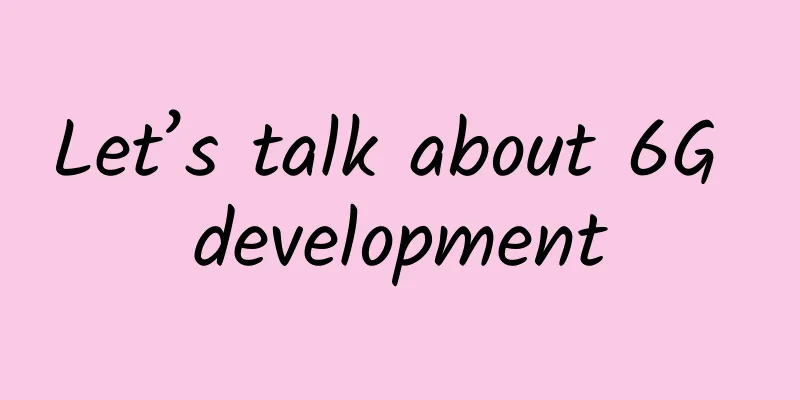As 5G development enters the second half, what kind of report card has been delivered?

|
It has been four years since China issued 5G commercial licenses in 2019. What are the results of 5G commercialization? At the 2023 Shanghai World Mobile Communications Conference not long ago, news about 5G technology was overwhelming, not only becoming the focus of thousands of industries, but also showing us the latest achievements of my country's 5G development. 5G development is in full swing5G is the fifth generation of mobile communication technology, featuring high speed, large capacity, low latency, and high reliability. Since 2019, China has begun to vigorously promote the development of 5G technology and has become one of the global leaders in 5G technology. Survey data shows that as of May this year, the total number of 5G base stations in my country reached 2.844 million, accounting for 25.3% of the total number of mobile base stations, and the coverage rate of administrative areas above the county level reached 100%. At the same time, the construction of 5G industry virtual private networks has accelerated, accelerating the upgrade from "well built" to "well used". As of March this year, the total number of 5G industry virtual private networks has exceeded 16,000, covering multiple fields such as industry, ports, energy, and medical care. In terms of technological innovation, a relatively complete 5G system, chip, terminal, instrument and other industrial chains have been created. Moreover, the GSMA's 2023 China Mobile Economy Report points out that China is the world's leading 5G market, accounting for 60% of global 5G connections by the end of 2022, and operators are increasingly turning to 5G industry applications. For example, the 5G+ emergency treatment system has been built and put into use in more than 70 prefecture-level cities, and the 5G application of the top 50 coal enterprises in the country accounts for as much as 72%. During the 2023 Shanghai World Mobile Communications Conference, operators also demonstrated new 5G calls, which are innovative call applications and value-added services that integrate multimedia communications, artificial intelligence technology, and computing power networks. Based on the operator's audio and video calls, it can integrate digital human fun calls, real-time translation, AI-assisted calls, remote assistance and other scenarios, with stronger visualization and interactivity. Entering the 5G-Advanced stageAs 5G commercialization continues to advance, its application boundaries are gradually expanding, and commercialization has entered a new stage, 5G-Advanced, or 5.5G. Communication network standards are usually upgraded every 10 years or so, and because technology iterations are upgraded too quickly, there is usually a transitional technology stage between each integer generation. As an evolutionary technology between 5G and 6G, 5.5G will enter a critical stage of transition, with network features including 10G downlink, 1G uplink, 100 billion connections, and endogenous intelligence. At this stage, the 5G enhanced standard has initially achieved air-space, ground-ground coverage, and enriched the scenarios of the Internet of Vehicles. Wen Ku, chairman of the China Communications Standards Association, said that we should focus on the formulation of key core technology standards for 5G-A, and accelerate the evolution and upgrading to 5G-A on the basis of protecting 5G network investment; we should propose innovative solutions and services based on industry challenges and market application needs; we should coordinate the role of the government's "visible hand" and the market's "invisible hand" to help achieve 5G social service goals. Huawei Vice Chairman and Rotating Chairman Meng Wanzhou believes that the global 5G commercial use has continued to lead value creation in the past four years, and 5.5G is the inevitable path for the evolution of 5G networks. From 5G to 5.5G, it will better match scenarios such as human connection, Internet of Things, perception, and high-end manufacturing, and incubate more new business opportunities. Research and development of matching technology based on scene requirementsMeng Wanzhou believes that the ladder of success lies not only in the continuous evolution of single-point technology, but also in matching the appropriate technology based on scenarios and needs, and moving up the dimension through system engineering methods. This is not only applicable to the commercial market, but also to technology research and development. Specifically: First, match key technologies based on scenario characteristics and implement system engineering. Second, go deep into scenarios, understand pain points, and adopt system engineering thinking. Third, unite customers, developers, peers, partners and other upstream and downstream, focusing on the full cycle of R&D, procurement, supply, and marketing. Fourth, grasp modeling, solving and optimization, tools and methods to build the sustainable success of 5G business. Take the antenna, a component of the wireless communication system, for example. The function of the antenna is to directional radiate or receive radio wave signals. In the transmitting state, the high-frequency electromagnetic energy in the transmission line is converted into electromagnetic waves in free space. In the receiving state, the electromagnetic waves in free space are converted into high-frequency electromagnetic energy in the transmission line. Therefore, the antenna is crucial for base stations or devices. How to match the appropriate technology based on the scenario and adopt the appropriate measurement method to ensure that the antenna achieves a wider coverage? As Huawei's partner in the field of antenna measurement, MVG has developed a multi-probe test system called SG Evo for 5G, which is specifically designed for antenna spherical near-field testing and OTA testing, allowing measurements to be performed using very fast multi-probe technology at higher frequencies to cover the 5G FRF1 and FR2 bands. Mathieu Mercier, technical director of MVG Asia Pacific, said: "Compared to 5G, the main difference of 5.5G is the need to test larger phased array antennas at higher frequencies. Since phased array antennas can generate many beams, the amount of testing has increased dramatically. Based on years of experience in helping Huawei test massive MIMO, MVG is also developing new measurement capabilities to improve test efficiency. Similarly, the 6G era will require testing with more advanced phased array antennas at higher frequencies." "Currently, more and more technologies are being used to connect cars, including communications (3G/4G/5G/Wifi/Bluetooth), positioning (GNSS global navigation satellite system, NTN satellite network), and safety (V2X vehicle networking). Among them, the continuously evolving communication network will also help the realization of smart transportation in the fields of vehicle-road collaboration and intelligent driving. For automobiles, it is crucial to have an efficient and fast measurement system for comprehensive antenna testing. We believe that a very fast measurement system is needed to ensure that all antennas on the car are fully tested in a reasonable time," said Mathieu Mercier. Antenna testing is just one of the difficulties that need to be overcome in the commercialization of 5G, 5.5G, and even 6G. To promote the development of future communication networks, we should not only focus on the continuous evolution of single-point technologies, but also match appropriate technologies based on scenarios and needs, and move up the dimension through system engineering methods. Final ThoughtsTechnology is developing rapidly, and keeping up with the trend of the times and innovation have become particularly important. Now 5G has been commercially available for four years, 5.5G is still on the way, and 6G is also on the agenda in the future. With more innovative application scenarios and service models, the future communication network will not be limited to traditional applications and scenarios, but will continue to promote the integration with the Internet of Things, artificial intelligence, and computing power networks to form a smarter and more efficient digital ecosystem and move towards the future. |
<<: The role of 5G in shaping the future of smart cities
>>: How will 5G change the world?
Recommend
Wang Xiaochu: Prepare for 5G and avoid making the same mistakes as in the 4G era
Recently, Wang Xiaochu, Chairman and Chief Execut...
What is the difference between FTP and SFTP?
In actual project development, the most commonly ...
The Experience Economy is in Full Swing: Aruba Drives the Intelligent Digital Workplace
Under the wave of mobility and digitalization, th...
The past and present of IPv6 and the comparison with IPv4
IPv6 is the abbreviation of Internet Protocol Ver...
Cisco appears at the 4th National Cyber Security Publicity Week, committed to building a secure "all-intelligent network"
[51CTO.com original article] In the golden autumn...
66 Cloud's 4th anniversary, 20% off monthly VPS and 40% off annual VPS, Hong Kong CMI/US CN2 GIA/AS9929/Japan Softbank, etc.
666clouds recently launched an event for New Year...
What does the arrival of 5G mean for the Internet of Things?
In today’s fast-paced, hyper-connected and tech-e...
The roadmap for building a digital China in the next five years has been released to develop seven key industries including cloud computing
[[385931]] The draft outline of the 14th Five-Yea...
Screen unlocking technology + 48MP ultra-wide-angle AI triple camera, Huawei Enjoy 10S in-depth review
I don’t know when it started, but when people men...
Misaka: $44/year KVM-2GB/32G NVMe/2TB/Germany (optional CN2)
Misaka is a Chinese merchant (the same company as...
The key to managing "big data killing old customers" is to prescribe the right medicine
[[343477]] To manage the phenomenon of "big ...
Expert Feature: To the 2G Era That Will Eventually Pass Away
Recently, the incident in which a local operator ...
When will 5G become mainstream, or is it already mainstream?
Is 5G still waiting for a "killer app"?...
The days of exponential growth in 5G capex are over, but the outlook is not bleak
Stefan Pongratz, vice president and analyst at ma...
RAKsmart: New AS9929 line in Los Angeles, dedicated server/cloud server/VPS options starting from $1.95/month
RAKsmart recently added China Unicom AS9929 line ...









